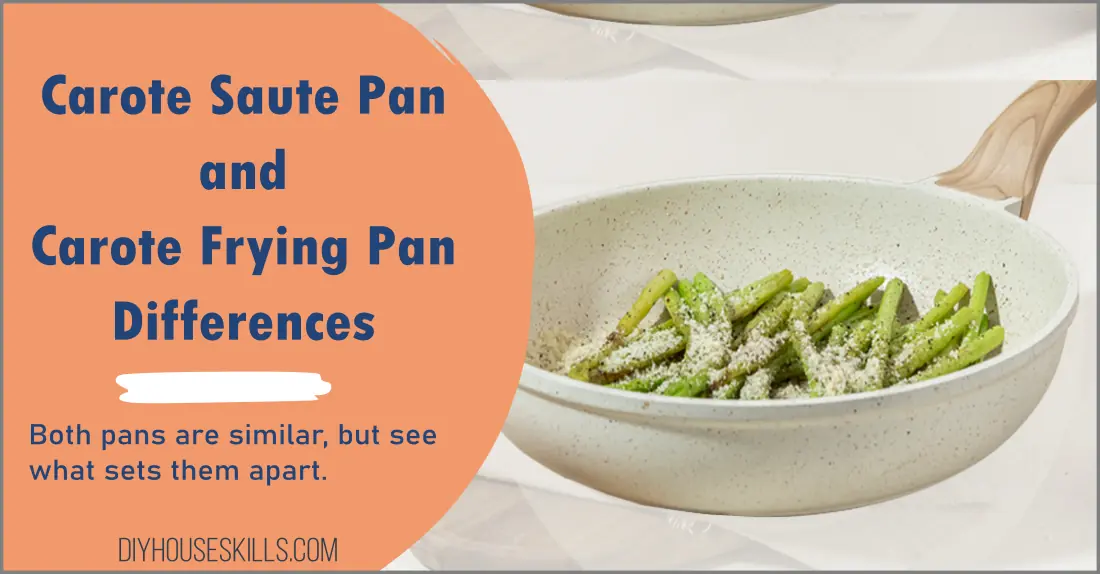If you’re a fan of cooking, then you know that there are all sorts of different pans out there. But what’s the difference between a Carote saute pan and a Carote frying pan?
Let’s take a closer look.
- A sauté pan and a frying pan may seem like very similar pieces of cookware, but there is one key difference: the depth of their sides.
- Carote has an extensive range of both sauté pans and frying pans.
See my Carote Cookware Review, Answers, and Buying Information where I take a closer look at Carote granite stone cookware, answer common questions about the products, and provide buying information to help you decide if it is right for you.
- What Is A Saute Pan?
- What Is A Frying Pan?
- A saute pan has straight sides that are taller than a frying pan, while a frying pan has sloped sides.
- The taller sides of a saute pan make it better for cooking food in liquid, while the sloped sides of a frying pan make it better for browning food.
- When To Use A Frying Pan:
- When To Use A Saute Pan:
- How to choose
- Conclusion
THIS POST MAY CONTAIN AFFILIATE LINKS. As an Amazon Associate, I earn from qualifying purchases. PLEASE READ MY DISCLOSURE FOR MORE INFO.
The main difference between a saute pan and a frying pan is the depth of the sides.
While the two pans have different shapes, it may not be immediately obvious what the difference between a sauté pan and a frying pan is. Let’s explain below.

What Is A Saute Pan?
A sauté pan has straight sides that are taller than a frying pan. They come with a lid and sauté pans provide more space and can be used to hold more liquid than a frying pan.
To complicate matters a bit, you can fry in a sauté pan, but it is not ideal for tasks like making omelets.
This makes it great for tasks like:
- Searing
- Sauteing
- Reducing sauces
- Making gravies
- Braising
Carote Saute Pan
Carote sauté pans are available in 3 sizes, allowing you to select the size that best suits your needs.
3.66 QT Covered Saute pan – 10 inch

Carote cookware is made from materials originating from Switzerland, is free of PFOS, PFOA, and other harmful chemicals. It guarantees that your daily cooking is both safer and healthier.
Five-layer, non-stick granite materials have exceptional nonstick properties. The performance is complemented by greater durability and a healthy level thanks to Five-layer DURIT high-Level technology.
4.5 Qt Saute Pan with lid – 11 inch

Per Carote:
- All stove compatible
- Induction ready
- 100% free of PFOAs, PFAs, Lead, Cadmium
- 5 layers of granite-coated surface feature premium nonstick
- 4mm thick die-cast aluminium base for lifetime use
6.5 Qt Saute Pan with lid – 12.5 inch

- Easy to clean.
- Great value for the money.
- Great heat distribution.
- Lightweight design.
- The durable surface is scratch-resistant.
What Is A Frying Pan?
A frying pan has slanted sides that are shorter than those of a sauté pan. Its slanted sides allow food to easily slide onto a plate when done.
The sloped walls of a frying pan make it optimal for browning certain foods and achieving an even heat distribution across their surface.
This makes it better for tasks like:
- Frying meat
- Scrambling eggs
- Making omelets
- High heat searing
- Stir-fry and tossing
Carote Frying Pan
The Carote frying pan is available in 4 sizes.

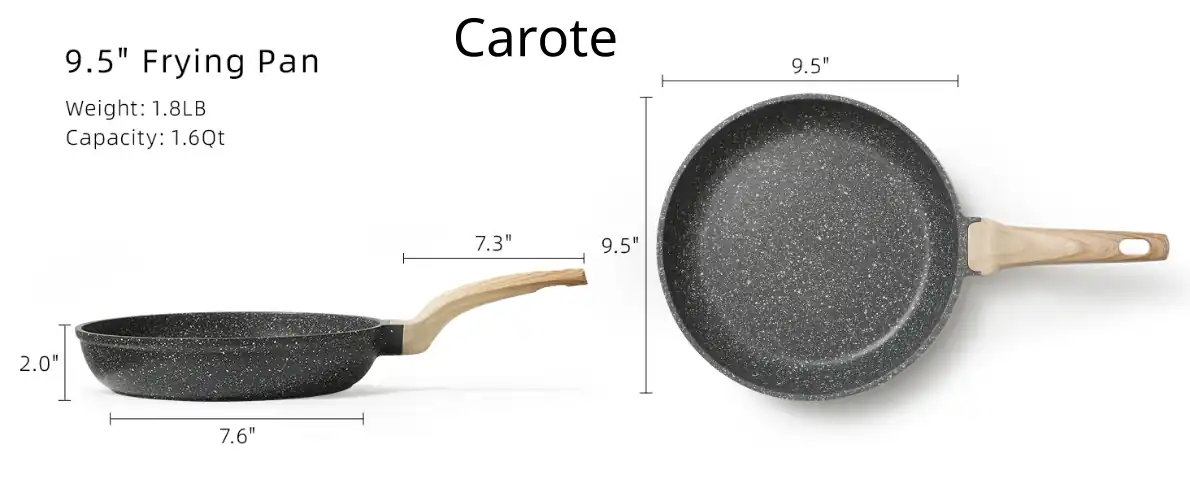
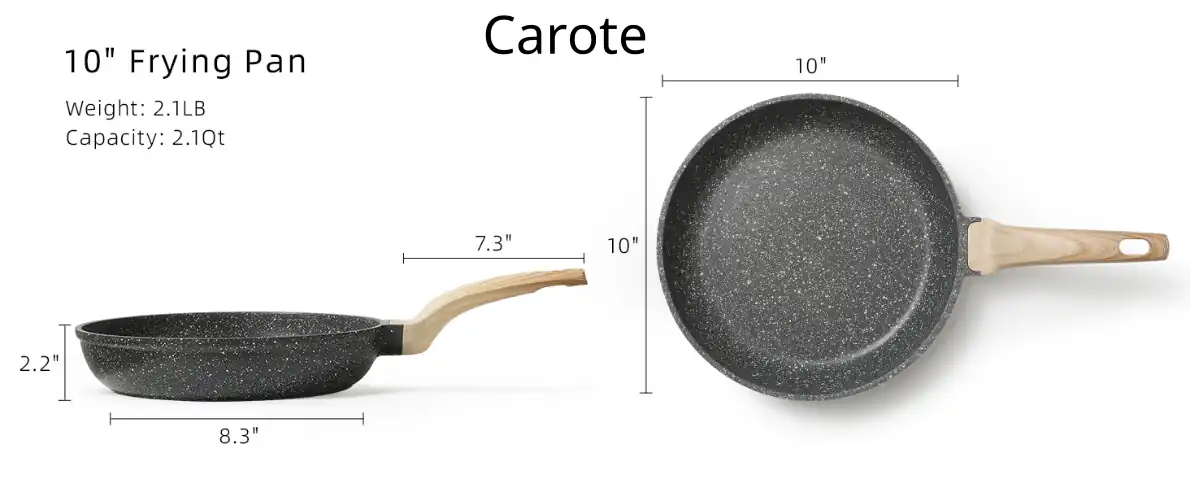
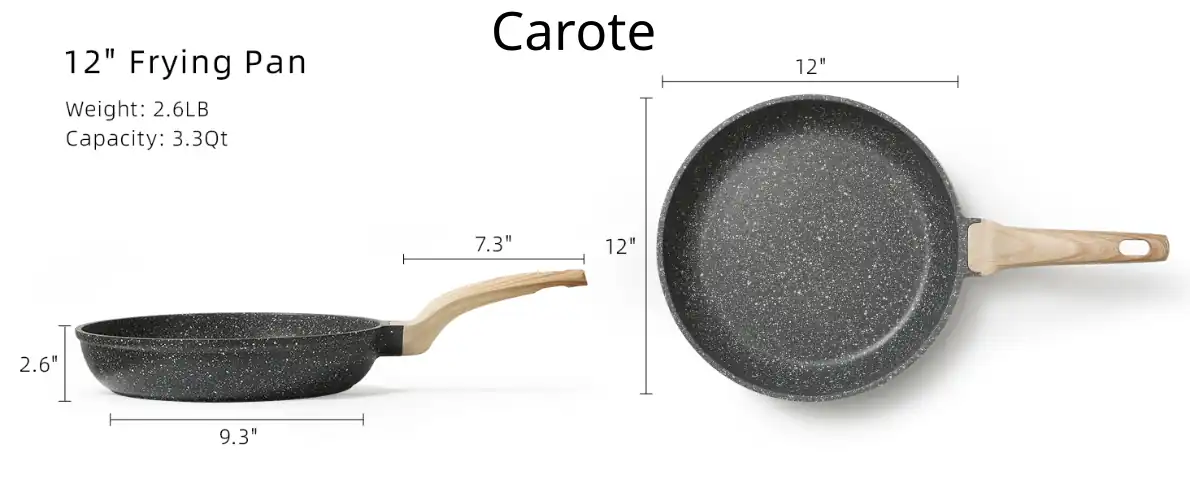
A saute pan has straight sides that are taller than a frying pan, while a frying pan has sloped sides.
Saute pans are deeper and provide more space, making them great for tasks like searing and reducing sauces.
A frying pan, on the other hand, has sloped sides and is better suited for tasks such as browning or sautéing small pieces of food.
This is due to its construction, providing conduction over a wider area at the same time.
Both pans are great for any kitchen, but knowing which one to use for specific tasks can create perfect culinary dishes.
Pair these pans with Carote’s utensils and omelet pan to upgrade your home cooking game. The Carote omelet pan is made from a special nonstick granite surface that provides exceptional non-stick performance and superior heat distribution.
The taller sides of a saute pan make it better for cooking food in liquid, while the sloped sides of a frying pan make it better for browning food.
Both a sauté pan and a frying pan are essential kitchen tools for the ambitious home chef, with each having its own unique benefits.
The taller sides of a sauté pan make it great for cooking things that require more liquid or moisture, such as tricky pieces of fish or vegetables swimming in a flavorful sauce.
Meanwhile, the lower sides of a frying pan make it perfect for browning and sautéing, giving you evenly cooked meals every time.
Both items are important additions to any cook’s cupboard; just be sure to consult your recipe before you begin so you know which pan is best.
When To Use A Frying Pan:
Frying Pans are best for tasks like:
- Browning meats and vegetables
- Frying eggs, bacon, or pancakes
- Stir-frying and tossing ingredients
- High heat searing
When To Use A Saute Pan:
Saute Pans are best for tasks like:
- Searing meats and vegetables
- Sauteing ingredients
- Reducing sauces
- Making gravies
- Braising meats
Both pans can be used for similar tasks, but the saute pan is generally better for cooking larger quantities of food or food that needs to be cooked in liquid.
The saute pan is a great choice for those who need to cook larger amounts of food. It is designed to allow you to both sear and cook in liquid, giving you greater versatility when it comes to recipes.
The saute pan also comes with a lid, which helps to keep the heat and moisture in while cooking.
Additionally, it is deeper than the frying pan, allowing you to cook more food at once.
The saute pan is ideal for tasks such as searing, sautéing, reducing sauces, making gravies, and braising.
How to choose
When choosing between a saute pan and a frying pan, it is important to consider the depth of the sides.
A saute pan has straight sides that are taller than a frying pan, while a frying pan has sloped sides.
The taller sides of a saute pan make it better for cooking food in liquid, while the sloped sides of a frying pan make it better for browning food.
Both pans can be used for similar tasks, but the saute pan is generally better for cooking larger quantities of food or food that needs to be cooked in liquid.
Note: Unlock a World of Possibilities in the Kitchen – Introducing Carote’s Durable Removable Handle Cookware. Carote’s Removable Handle Cookware will help you simplify your life and cooking experience like no other. Check out my article on the cookware.
Conclusion
So, which type of pan is best for you? That depends on what kind of cooking tasks you do most
So while they are similar in shape, the sauté pan and the frying pan are two very different tools. Depending on the task at hand, one may be better than the other. It’s important to understand the differences between them in order to pick the right tool for the job.
The Carote saute pan and Carote frying pan offer great quality and performance in either application, so you can be sure that your meal will turn out delicious no matter what.
See my article on the whole line of Carote cookware:
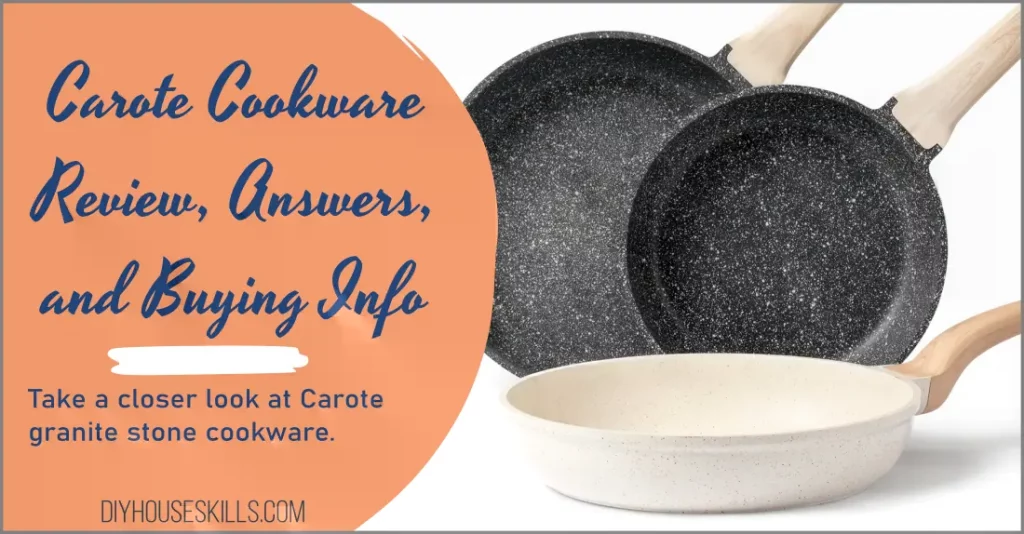
In this review, we will take a closer look at Carote granite stone cookware, answer common questions about the products, and provide buying information to help you decide if it is right for you.

I’m J.S., I created and am the content manager at DIYHouseSkills.com. I do the research and write the articles that appear on this website. I’ve learned many household skills during my life and think it’s important to at least know the basics so that you can save yourself time and money… READ FULL BIO >
